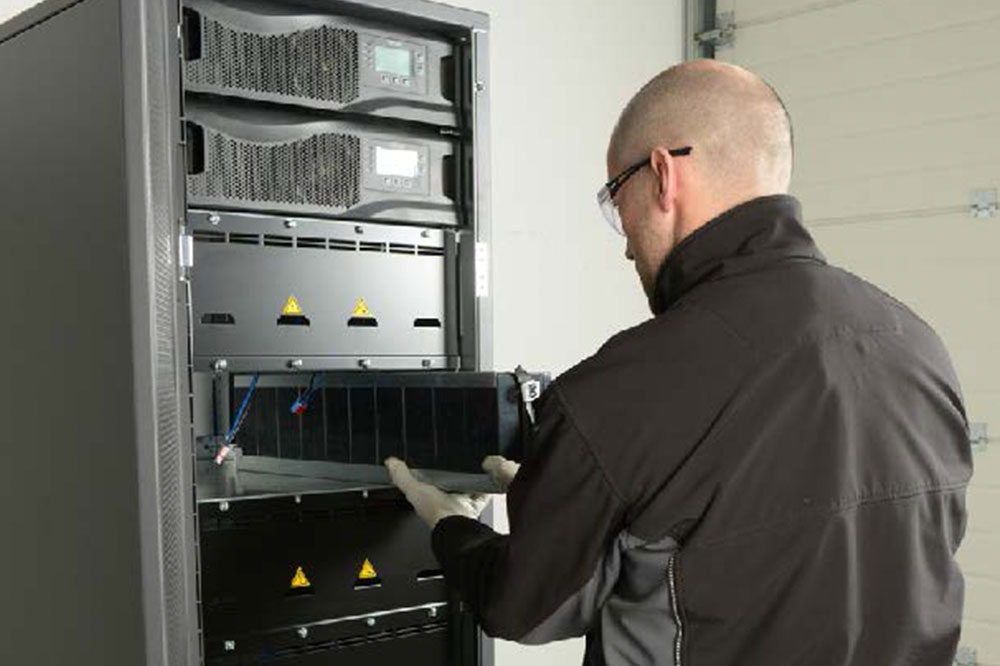Mike Elms, managing director at Centiel UK, explains how businesses could save their power and their reputation by simply taking better care of their UPS.
Years ago, before I joined Centiel, I remember a legacy UPS system that we used to look after under a maintenance contract for a large international airport. The system was pretty old and certainly obsolete in terms of manufacture.
It had just a single string of battery blocks and was pretty inefficient with no redundancy and was in desperate need of an upgrade.
However, the client preferred to increase the periodic number of checks on the system rather than invest in new, more efficient technol- ogy, and incorporating increased load protection with some form of re- dundancy. An upgrade would have paid for itself in improved operating efficiency and replacement parts within a few years.
One day, during a maintenance visit, I asked the client what would happen if the UPS actually failed? My contact replied, “We’d be on the national news; it protects the power to the baggage handling system!”
Saving face
Maintenance contracts are an important part of ensuring the availability of a critical power source. However, the hidden costs associated with a power failure by not replacing equipment at the recommended time also needs to be considered, as the consequences in lost revenue, reputation and associated negative publicity could be even more far-reaching and potentially catastrophic for a business.
If you purchase an expensive, high-quality, highly-engineered vehicle you would expect to have regular services to fine-tune the engine and keep the warranty intact. If you buy a cheap car, you might not bother to maintain it quite so well; you may leave it later to change the oil or replace other worn parts. However, you also wouldn’t be surprised if it breaks down on a regular basis.
When it comes to protecting critical power supplies there is a strong argument for buying the best, most reliable, highest availability and efficient UPS – and then also maintaining it properly. Then when the power does fail, you have the confidence and peace of mind that the system will do the job it was intended to, rather than land your compa- ny in the headlines.
Let’s get chemical
Often overlooked as they aren’t deemed to be ‘exciting’ are the batteries. They work as a chemical reaction and by their very nature start degrad- ing from day one. Regular impedance tests, load bank tests or battery monitoring tests will reveal a pattern of gradual degradation where the results can be compared over time.
In an ideal world, 50 batteries should all degrade at the same rate. However, in real life, often one will fail earlier than the others. Perhaps there was a small defect which didn’t show up during normal manufacturing end-of-line tests, or it may have been accidentally dropped in transit.
Regardless, if one battery fails, the whole battery string will fail, and so regular checks will identify any weak links in this chain. It is better to replace a year early than one day too late in this case.
Capacitors can fail much more spectacularly and there is a video on the Centiel website created under controlled conditions which shows just how dangerous capacitor failure can be. Most AC capacitors have a shelf life of five to seven years, while DC capacitors usually need replacing between seven to ten years. Maintenance engineers will look for signs of damage: cracks, splits or any drying out which could potentially cause an issue.
Give UPS a home
Environmental considerations also need to be given to the housing of the UPS to keep it in tip-top condition. Ideally, a dust-free, tempera- ture-controlled comms room will ensure the technology lasts as long as possible.
In the past, contrary to our recommendations, I’ve maintained UPS systems kept in an old underground station and another which was open to the external atmosphere next to a huge car park. Both needed regular cleaning to remove oily deposits.
The UPS next to the car park regularly needed components replacing. By simply moving the system to a suitable comms room this could have been prevented with the associated cost savings.
As for the UPS in the underground station, it was still going strong when our maintenance contract ended but for how long? It was only
a matter of time before something shorted and went ‘bang’. Here, it is worth taking the advice of specialist maintenance engineers whose goal is to help keep your highly engineered UPS system in optimal condition, so it is ready to respond to the next power outage.
Just as you wouldn’t allow people to walk on the roof of your ex- pensive car, you wouldn’t let other contractors use the UPS as a ladder to reach other equipment, would you? I’ve visited installations where footprints on the top of the modules are still in evidence.
In this article I’ve touched on just a few areas of concern when it comes to maintenance. I think overall, maintaining a UPS properly, is about creating a regime where those responsible take an active interest in the overall health of the system. Long-term, this will reduce total cost of ownership and ensure power remains protected, while also playing a part in protecting the organisation’s reputation too.


